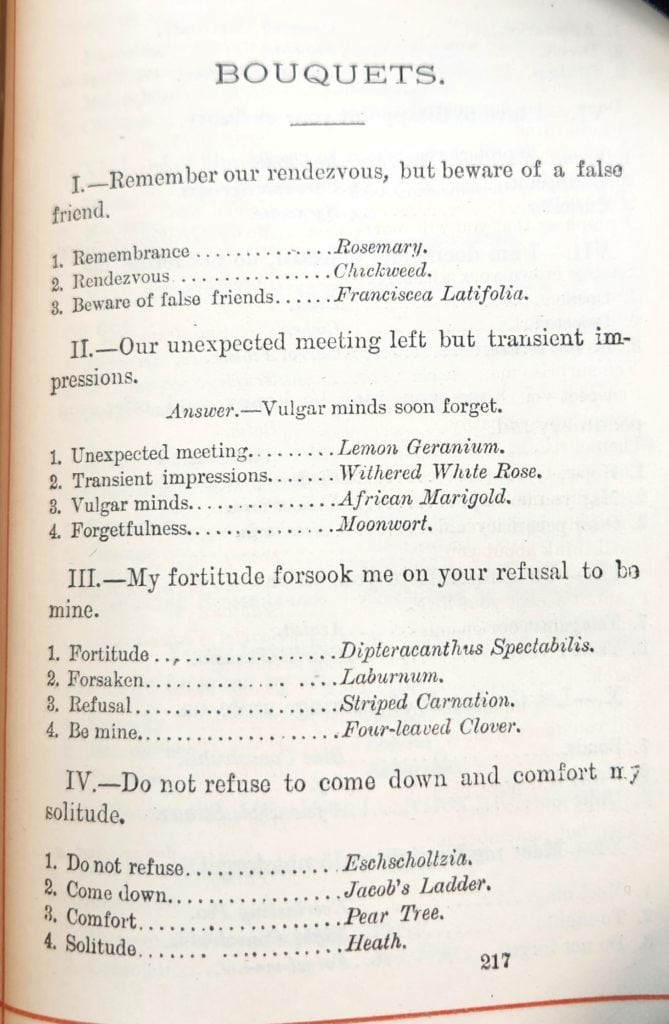The following is written by museum intern student Joy Curry.
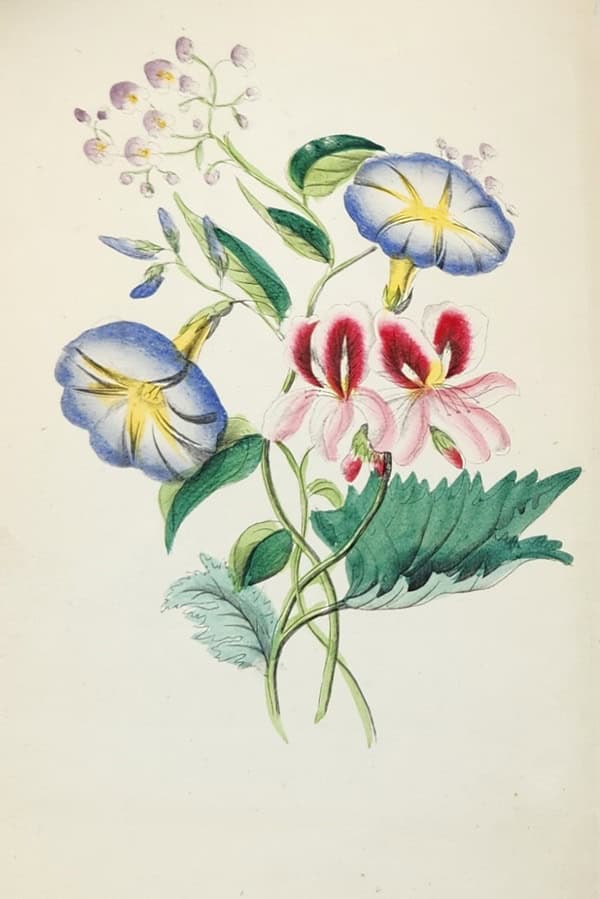
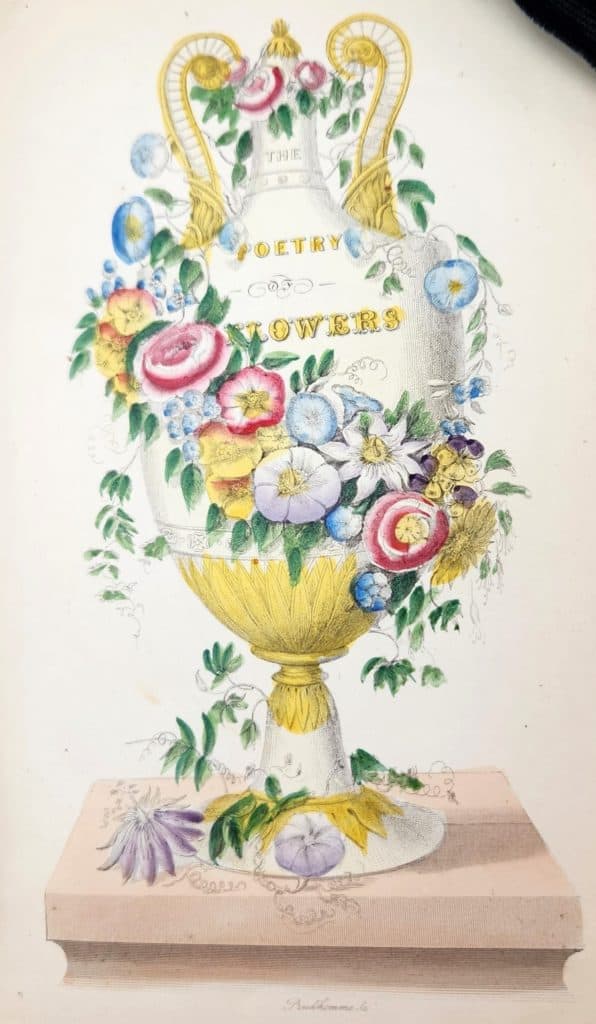
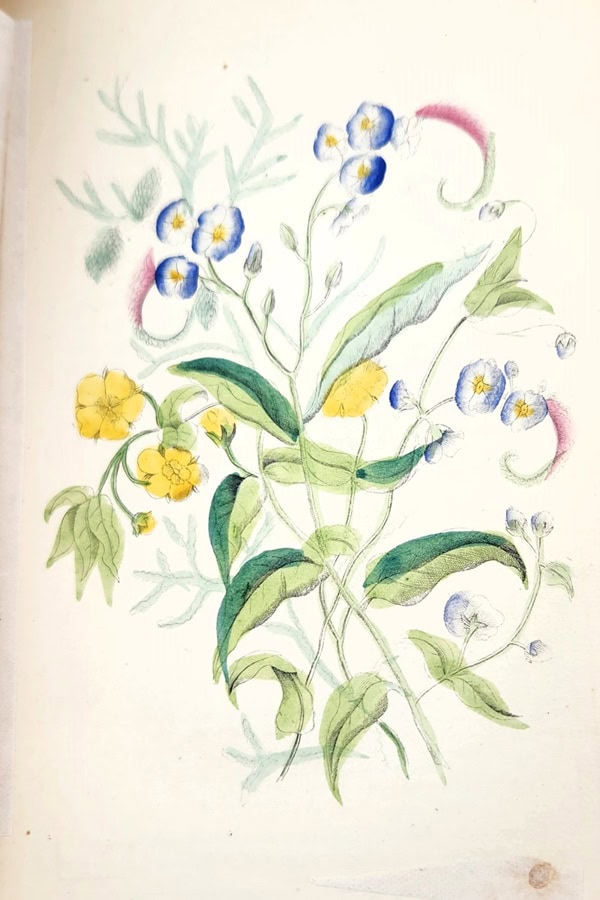
Valentine’s Day is, among other things, a common time to give and receive flowers. If you visited a florist this last holiday, you might have seen some explanations on what flowers mean. You may have heard of the symbolism attached to different colors of roses for example, a red rose means love, and a yellow rose means friendship—but you can send even more specific messages with your bouquet if you know where to look. During the Victorian period, floral enthusiasts published full-blown dictionaries explaining a symbolic “language of flowers.” This language of flowers gained popularity from a misinterpretation of the Turkish harem game of Sélam, which involved rhyming items, as a language of symbolic objects that lovers used to communicate with one another in secret.

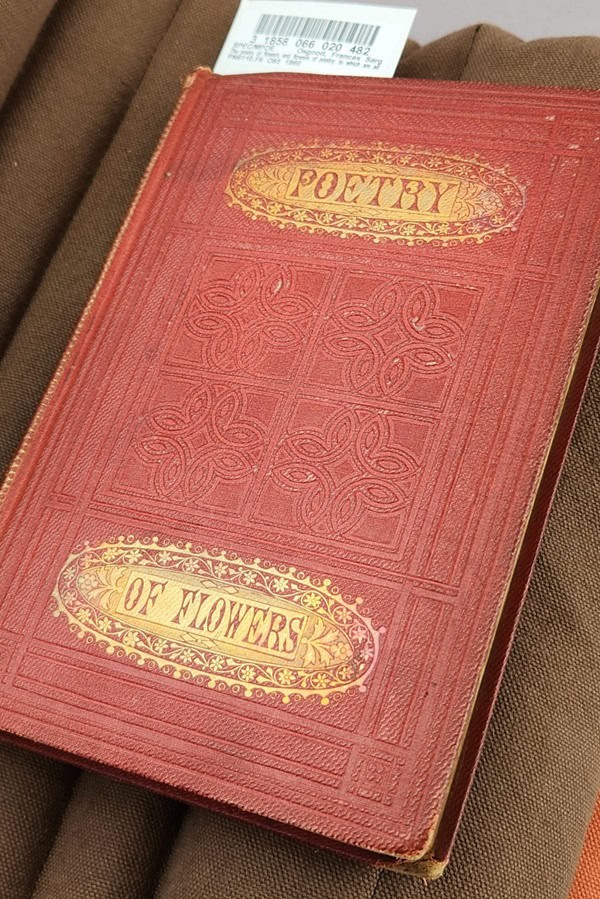
Here in Special Collections and Archives, we have two poetry compilations that contain floral dictionaries: Poetry of Flowers selected by Mrs. C. M. Kirtland, and Frances S. Osgood’s 1860 book The poetry of flowers and flowers of poetry; to which are added, a simple treatise on botany, with familiar examples, and a copious floral dictionary.
These books show that Victorian “flower language” was far from standardized. For example, Kirtland and Osgood give very different meanings to the Bachelor’s Button flower. Osgood describes it as meaning “I with the Morning’s Love have oft made Sport,” while Kirtland claims that it means “Celibacy.” So, if you want to use floral language to communicate with someone, make sure you’re both referencing the same dictionary!
We hope you had a happy Valentine’s Day—but even if you didn’t, here are some floral ways to express your feelings, courtesy of the Mabbott Poe Collection!
· A bouquet of Cherry Blossom or Foxglove, Scarlet Auricula, and Turk’s Cap means “Your insincerity and avarice make me hate you.”
· A bouquet of Nasturtium, Oak Leaves, Heliotrope, and Everlasting or Immortelles means “Your patriotism, courage, and fidelity merit everlasting remembrance.”
· A bouquet of red roses, Carolina Syringa, and Sycamore means “I love to disappoint your curiosity.”
· A bouquet of Lemon Geranium and Withered White Rose means “Our unexpected meeting left but transient impressions.” If you receive this bouquet, the book recommends responding with a bouquet of African Marigold and Moonwort, meaning “Vulgar minds soon forget.”
Further reading:
Seaton, Beverly. The Language of Flowers : A History / Beverly Seaton. Charlottesville: University Press of Virginia, 1995.
Nossett, Lauren, and Luca Pixner. “The Language of Flowers and the (Re)Productive Female Body in Hedwig Dohm’s Werde, Die Du Bist.” Feminist German Studies 36, no. 1 (2020): 144–65. doi:10.1353/fgs.2020.0011.
